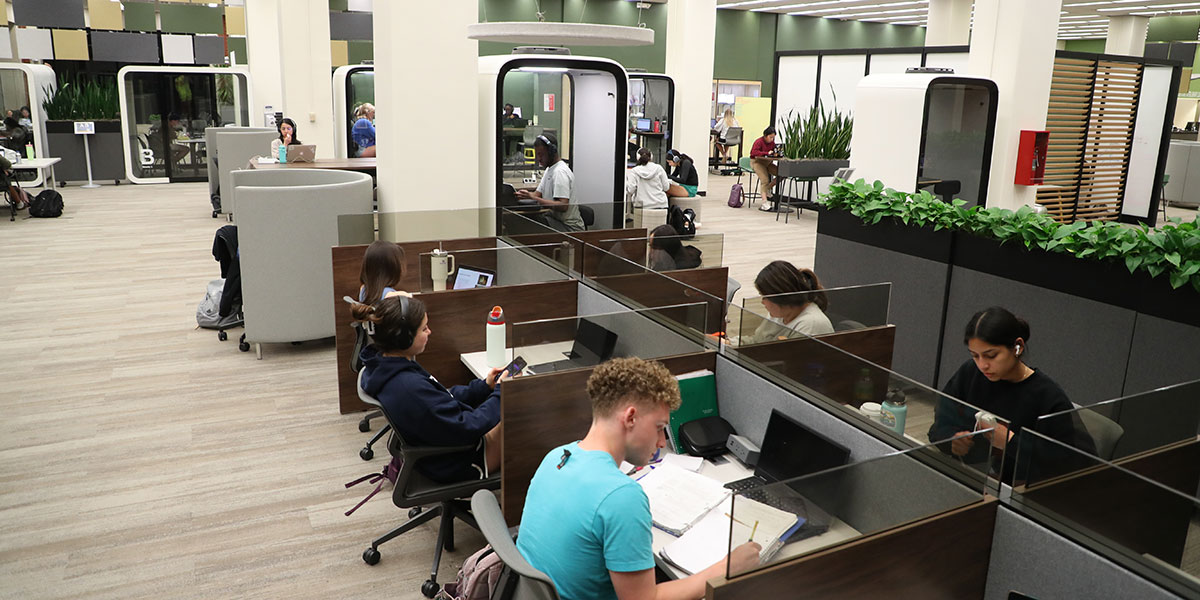Baylor Libraries: A student hub year-round (but especially at finals)

Chances are, if you attended Baylor, you have memories of studying in Moody and/or Jones libraries. Maybe you remember late nights preparing for a paper or exam, or the fun of running into friends and then having to make yourself get back to work.
Baylor’s libraries have long been a sort of academic community square, and that’s never been more true than today. As the ways students use libraries has evolved, Baylor Libraries has adapted to meet the needs of today’s Bears. Here are four examples:
* Study zones — Many areas throughout the library have likely seen upgrades since you were a student, and these study zones continue to evolve to meet student needs. There are flexible study zones, like the foyer or garden level; individual study zones with rooms you can use for focused study; and silent study zones like Prichard Commons for students who don’t want any distractions. And no matter the hour of day, you’ll likely find them all well-populated with Baylor students.
* Study pods — The first floor of Moody Library features study areas that look vaguely futuristic. One part of that is new furniture — chairs and desks surrounded by kiosk- or cubicle-like walls that allow students to be a part of what’s going on in the room while also giving them a semi-private place to study. Even more noticeable than the furniture are the Moody PODS: framed box-like rooms, scattered throughout the first floor, which dampen sound and provide individual students or groups a reservable place to study or work ensconced in a windowed, but quiet pod of their own.
* Experiential Learning Commons — Not all projects require typing and a Word document. Many students need audio or video capabilities to product multimedia presentations or projects. They gravitate toward the Experiential Learning Commons in Moody’s garden level; it features a media lab with spaces for audio or video editing, technology and tools for creative projects, equipment rental and more.
* Food and drink — Students need fuel to study, and it’s right there in the Moody foyer: the largest Starbucks on a college campus. You’ll also see students bringing food along with them so they can continue studying. Yes, that’s allowed! Says Dean of Libraries Jeffry Archer: “It’s not like when I was in college, when you would get frowned upon even sneaking something to drink in.” No need to break your work rhythm to eat when you can do both at the same time!
Of course, there’s also books (tens of thousands of them), digitized archives (which make countless documents easily accessible to students), collections, and academic resources like the University Writing Center and a commons geared toward graduate student needs.
Whatever their individual draw, such resources collectively serve as a magnet that makes Baylor libraries a true academic hub for campus life like never before.
Sic ’em, Baylor Libraries!

